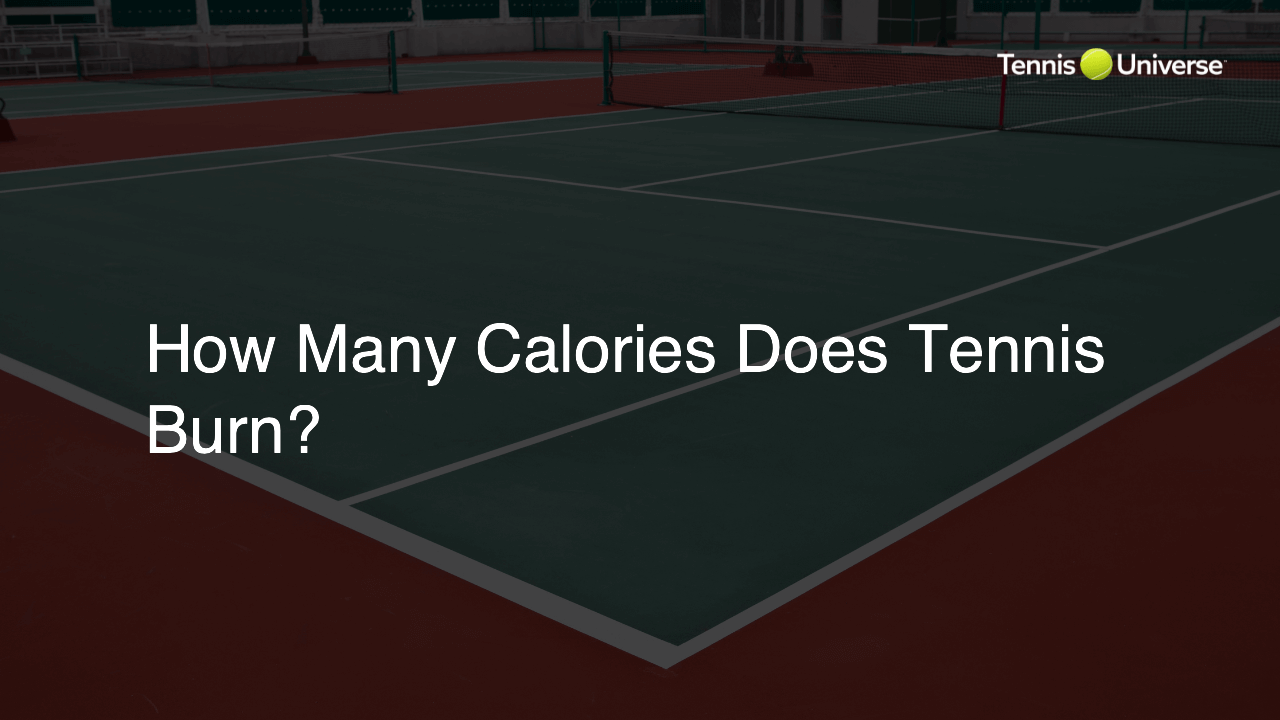Tennis can burn between 400 to 600 calories per hour, depending on factors like intensity, playing style, and individual fitness levels.
Calories Burned During Tennis
Tennis is an excellent sport for burning calories, as it engages various muscle groups and provides a great aerobic workout. On average, tennis can burn between 400 to 600 calories per hour, depending on several factors such as intensity, playing style, and individual fitness levels.
Factors Affecting Calorie Burn in Tennis
Intensity and Playing Style
The number of calories burned during tennis greatly depends on how intensely a player engages in the sport. A casual rally will burn fewer calories than a competitive match. The more aggressively a player moves around the court and swings their tennis racket, the more calories they burn.
Individual Fitness Level
A person’s fitness level impacts the number of calories burned during any physical activity, including tennis. Fitter individuals tend to burn fewer calories than those who are less fit, as their bodies are more efficient at performing physical tasks. Age, weight, and muscle mass also play a role in determining calorie expenditure.
Maximizing Calorie Burn in Tennis
Increase Intensity
To maximize calories burned on the tennis court, try increasing the intensity of your play. Incorporate more sprinting, quick changes of direction, and powerful shots to raise your heart rate and burn more calories. Engaging in singles matches rather than doubles also tends to provide a more intense workout.
Interval Training
Another way to increase calorie burn during tennis is to incorporate high-intensity interval training (HIIT). Alternate between periods of intense play, such as sprinting or hitting powerful shots, and periods of rest or lower intensity play. HIIT has been shown to increase calorie burn during and after your workout.
Improve Technique
Improper technique can cause energy inefficiency and limit calorie burn during tennis. Working on proper form, footwork, and optimizing the use of your tennis racket can help increase the number of calories burned by making your movements more effective and powerful.
Types of Tennis Games and Their Calorie Burn
Different types of tennis games have varying levels of calorie burn. Here are some examples that illustrate the difference in calorie expenditure:
- Singles match: An intense singles match can burn up to 600 calories per hour, making it the most calorie-intensive format in tennis.
- Doubles match: Playing doubles tennis can burn around 300 to 500 calories per hour, as it requires less movement and reduced intensity compared to singles play.
- Practice or casual play: Hitting balls with friends and leisurely playing can burn between 250 to 400 calories per hour, depending on the intensity and individual fitness levels.
Additional Health Benefits of Tennis
Beyond calorie burn, tennis offers numerous health benefits, such as improving cardiovascular endurance, increasing muscle strength and flexibility, enhancing hand-eye coordination, and promoting mental strength. Tennis also serves as a social outlet, providing opportunities to make new friends, enjoy friendly competition, and reduce mental stress.
Essential Tennis Tips for Better Calorie Burn
To increase your calorie burn during tennis and enjoy additional benefits of the sport, keep these tennis tips in mind:
- Warm up properly: A proper warm-up routine, including light jogging and dynamic stretching, prepares your body for intense play, helps prevent injuries, and optimizes your performance in burning calories.
- Practice consistency: Consistent play helps build muscle memory and improves overall fitness, resulting in more efficient calorie burning on the court.
- Utilize your entire body: Engaging your entire body while playing tennis, including your legs, core, and upper body, maximizes calorie burn and increases overall fitness levels.
- Set goals: Setting realistic goals for your tennis game, such as increasing your match win rate or improving serve accuracy, can motivate you to push yourself harder during play, leading to greater calorie burn.
- Consider working with a coach: A professional coach can help improve your technique, footwork, and overall game, making your time on the court more efficient and productive for calorie burning and fitness.
FAQ Section
If you have questions regarding calorie burn in tennis and how to optimize your workouts, refer to the following frequently asked questions for additional clarification:
How many calories does an hour of tennis burn?
An hour of tennis can burn between 400 to 600 calories, depending on factors such as playing intensity, individual fitness levels, and the type of game played (singles or doubles).
How can I increase calorie burn during tennis?
To increase calorie burn during tennis, focus on increasing the intensity of your play, incorporating interval training, and improving your technique. Playing singles matches and engaging in high-intensity practices can also help maximize calorie expenditure.
Does singles or doubles tennis burn more calories?
Singles tennis typically burns more calories than doubles tennis, as it involves more movement and greater intensity. However, both formats provide an excellent workout and can contribute significantly to an individual’s overall fitness.
How does my fitness level affect the number of calories burned in tennis?
Individual fitness levels can impact calorie burn during tennis, as fitter individuals tend to be more efficient at performing physical tasks. Factors such as age, weight, and muscle mass also play a role in determining how many calories you burn during tennis.
Can playing tennis help me lose weight?
Playing tennis can contribute to weight loss, as it burns a significant number of calories, improves cardiovascular endurance, and builds muscle. Combining tennis with a balanced diet and a comprehensive fitness plan can help support healthy weight loss goals.












